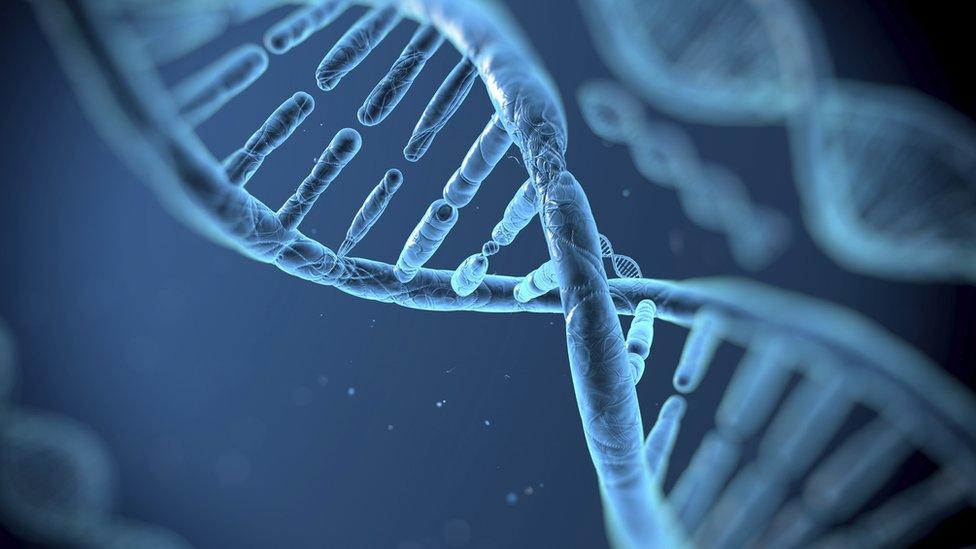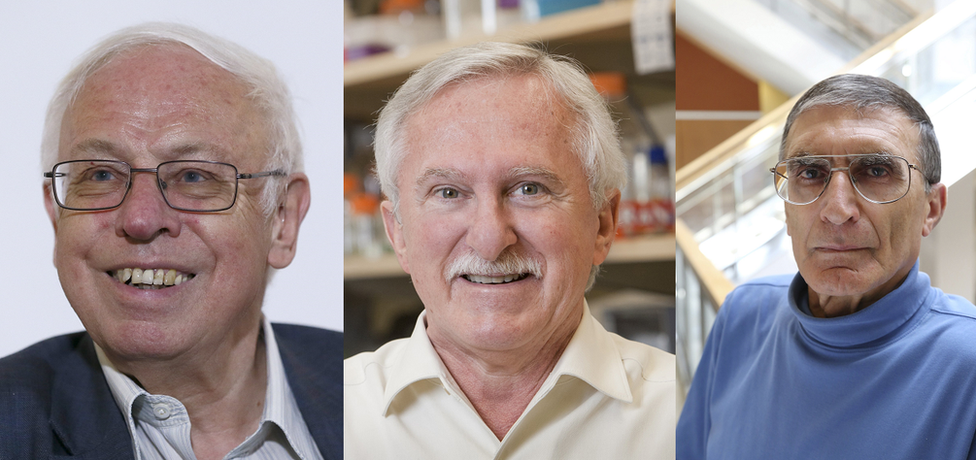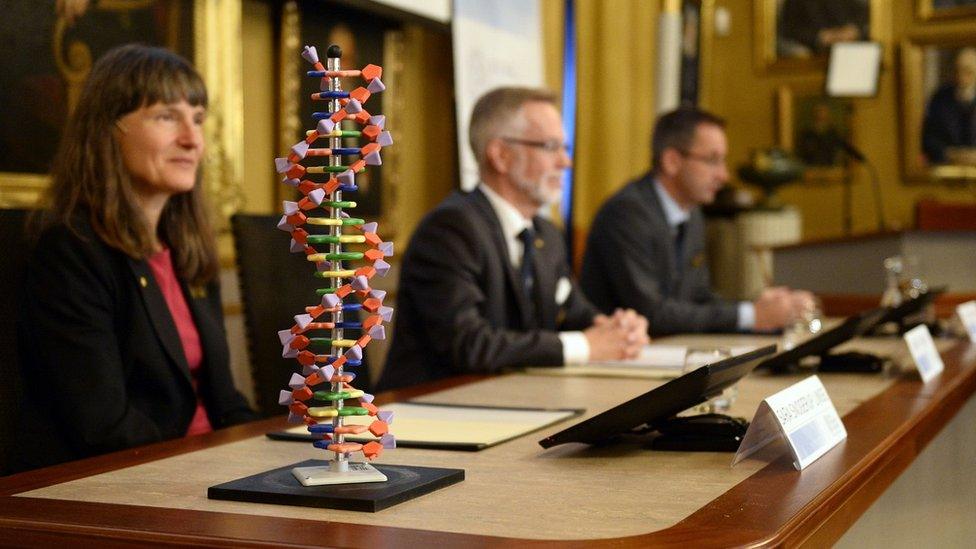Chemistry Nobel: Lindahl, Modrich and Sancar win for DNA repair
- Published

The DNA molecule is inherently unstable, but a host of mechanisms monitor and repair it
The 2015 Nobel Prize in Chemistry has been awarded for discoveries in DNA repair.
Tomas Lindahl and Paul Modrich and Aziz Sancar were named as the winners on Wednesday morning at a news conference in Stockholm, Sweden.
Their work uncovered the mechanisms used by cells to repair damaged DNA - a fundamental process in living cells and important in cancer.
Prof Lindahl is Swedish, but has worked in the UK for more than three decades.
The prize money of eight million Swedish kronor (£634,000; $970,000) will be shared among the winners.
"It was a surprise. I know that over the years I've occasionally been considered for a prize, but so have hundreds of other people. I feel lucky and proud to be selected today," Tomas Lindahl, from the UK's Francis Crick Institute, told journalists.
Claes Gustafsson, from the Nobel Committee, said the recipients had "explained the processes at the molecular level that guard the integrity of our genomes".
Monitoring and repair
DNA is open to an onslaught of different phenomena that can generate defects in our genomes.
UV radiation and molecules known as free radicals can cause damage. Furthermore, defects can arise when DNA is copied during cell division - a process that occurs millions of times each day in our bodies.
"Cigarette smoke contains small reactive chemicals, which bind to the DNA and prevent it from being replicated properly - so they are mutagens. And once there is damage in the DNA this can cause diseases including cancer," said Prof Lindahl, who for 20 years ran the Clare Hall laboratories in Hertfordshire - now part of Cancer Research UK.
To address those defects, a host of molecular systems continuously monitor and de-bug our genetic information. The three new laureates mapped in detail how some of these mechanisms worked.

Lindahl, Modrich and Sancar join 168 previous winners of the chemistry Nobel since 1901
In the 1970s, scientists had thought that DNA was a stable molecule, but Prof Lindahl demonstrated that it decays at a surprisingly fast rate.
This led him to discover a mechanism called base excision repair, which perpetually counteracts the degradation of DNA.
Sir Martyn Poliakoff, vice president of the UK's Royal Society, said: "Understanding the ways in which DNA repairs itself is fundamental to our understanding of inherited genetic disorders and of diseases like cancer.
"The important work that Royal Society Fellow Tomas Lindahl has done has helped us gain greater insight into these essential processes."
Turkish-born biochemist Aziz Sancar, professor at the University of North Carolina, Chapel Hill, US, uncovered a different DNA mending process called nucleotide excision repair. This is the mechanism cells use to repair damage to DNA from UV light - but it can also undo genetic defects caused in other ways.
People born with defects in this repair system are extremely sensitive to sunlight, and at risk of developing skin cancer.
The American Paul Modrich, professor of biochemistry at Duke University in North Carolina, demonstrated how cells correct flaws that occur as DNA is copied when cells divide. This mechanism, called mismatch repair, results in a 1,000-fold reduction in the error frequency when DNA is replicated.

The winners were announced at a news conference in Stockholm
The president of the American Chemical Society, Dr Diane Grob Schmidt, was up early to hear the announcement. She told BBC News that the winners were "three outstanding individuals".
Dr Schmidt was also quick to dispel any suggestion that the winning research was more biology than chemistry: "The making and breaking of these bonds is chemistry - in a biological context.
"I think, because of the implications and potential impact of unravelling these mechanisms, that it's a great choice."
The Nobel Prize in Physics was awarded on Tuesday to Takaaki Kajita and Arthur McDonald for their work on neutrinos.
The first of the 2015 Nobel Prizes, for physiology or medicine, was awarded on Monday by the Nobel Assembly at Karolinska Institutet. It was shared by researchers who developed pioneering drugs against parasitic diseases.
Follow Paul on Twitter, external.